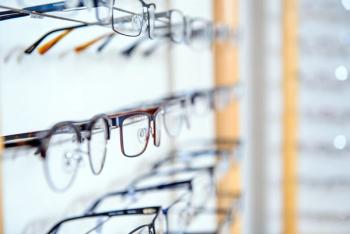
EyeCon 2023: Pearls for monitoring intraocular pressure at home and in the office
Real-time insights into fluctuations enhance glaucoma care and understanding of vision risk.
This December, Optometry Times' EyeCon 2023 will gather the nation’s leading optometrists and ophthalmologists to share new data and practical strategies that clinicians can apply to their patients.
The conference will take place December 1 to 2 at the Marriott Sanibel Harbour Resort and Spa in Florida. Kelly K. Nichols, OD, MPH, PhD, FAAO, dean of the University of Alabama at Birmingham School of Optometry, and A. Paul Chous, MA, OD, FAAO, a diabetes eye care specialist in Tacoma, Washington, will serve as cochairs of the meeting.
Thomas V. Johnson, MD, PhD, who is part of the faculty for EyeCon 2023, recently spoke with Sheryl Stevenson, Eye Care Group editorial director, to highlight his presentation. Johnson is the Shelley and Allan Holt Rising Professor of Ophthalmology and assistant professor of ophthalmology with the Wilmer Eye Institute at Johns Hopkins University School of Medicine in Baltimore.
To learn more about or to register for Optometry Times EyeCon 2023,
Video transcript
Editor's note: This transcript has been lightly edited for clarity.
Sheryl Stevenson: What can you tell us about in-office and home disease monitoring for patients with glaucoma?
Thomas V Johnson, MD, PhD: The importance of fluctuations in physiologic parameters has been appreciated in medicine for decades. Cardiology, endocrinology, and primary care have been transformed by using at-home blood pressure monitors and blood glucose monitors. Ophthalmology is positioned to make the leap to recognize the importance of intraocular pressure [IOP] fluctuations and change how we monitor patients with glaucoma.
I’m going to be discussing current and emerging concepts in ways that we can measure IOP in the office and at home. There are new devices and tools available to clinicians so that patients can measure their own eye pressure at home at all times of day and night. This has utility for several reasons.
It helps us better understand the range of eye-pressure stress that’s being placed on the optic nerve in individual patients. Sometimes there are patients who seem to be getting worse even though every time they come into clinic, their eye pressure is 10, 11, or 12 [mm Hg]. We’ve taken patients like that...asked them to do home tonometry and found that first thing in the morning their pressure is 25 [mm Hg]. Beyond that, it’s also a useful tool for the clinician to more quickly and accurately understand the risks that their patients have for vision loss and the responses to treatment.
We often will start an eye drop on a patient with glaucoma and then ask them to come back in the clinic a month or 2 months later to see what the pressure is. That requires a second clinic visit; the patient has to drive up to the clinic and sometimes take a day off work, or have someone drive them to the visit. We don’t know the answer to what that pressure drop did for several weeks.
With home tonometry, we can get real-time data describing exactly how low the pressure goes with the eye drop [and] what the kinetics of the response are. In patients who don’t have a dramatic response, sometimes we can see reductions induced by eye-pressure medicines that otherwise would have been masked…. If the eye drop reduced the pressure by 4 points but the fluctuation is 4 points, you might conclude that eye drop didn’t do anything. When you have many more data points spread out over time, you can have a much better sense of the effective treatments.
Stevenson: Does comanagement come into play in terms of overall awareness with patients who may be seen by both optometrists and ophthalmologists?
Johnson: It absolutely can. It’s nice to have a centralized point of eye pressure measurements. If a patient has a home tonometer, their measurements get uploaded to a cloud database, where that information is available to everyone taking care of the patient. This would aid in cross-collaborations and comanagement among eye care providers.
Newsletter
Want more insights like this? Subscribe to Optometry Times and get clinical pearls and practice tips delivered straight to your inbox.



















































.png)


